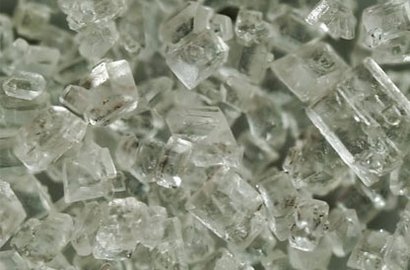Crystallization

The LIST continuous crystallization process combines the processes of evaporation, crystallization and drying in one single-shaft LIST KneaderReactor under vacuum. In the mixing chamber, the solvent in the feed product undergoes flash evaporation. As the solution becomes super-saturated, the product is crystallizing. The amount of evaporation duty and crystallization heat level out such that no major heat transfer is required.
After the evaporation stage, the crystals are still wet, sticky and capable of forming large agglomerates. The design of the LIST Kneader Reactor provides effective drying in combination with a slight grinding action at minimal product buildup and crust formation. A recycling of dry product within the product chamber is not required.
The feed solution is incooperated into a solid particle bed which seeds the crystallization and limits the mechanical power and shaft torque.
Throughout the process, the large heat exchange surfaces ensure precise temperature control.
Your Benefits
- Effective self-cleaning to minimize dead zones, product accumulation and product degradation
- Excellent kneading and mixing for better homogenization
- Low shear processing
- Effective heat transfer
- High surface renewal efficiency
- Large free vapour volume
- Precise and uniform temperature control due to large heat transfer areas
- Continuous processing
- Processing of sticky and highly viscous products
- Wide and flexible range of average residence times
- Wide range of possible residence time distributions (backmixed)
- Reliable process scale-up from pilot to industrial units
Example
Polyols, Sugar alcohols
Sugar alcohols or Polyols, are produced through hydrogenation of monosaccharide or disaccharide solutions.
Sugar alcohols are largely used in the food industry principally because of their low physiological caloric values. Sugar alcohols are also well known as a bulking agent for sweeteners. They are added in prescribed quantities for the regulation of the specific sweetness of a product. The specific properties of several sugar alcohols allow the replacement of sugar and glucose syrup in all food categories.
Paint additives
Crystallization and evaporation of methanol under vacuum of a highly pre-concentrated feed solution.
